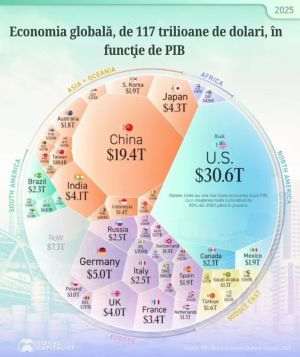The public debt/GDP ratio is a key indicator of a country's financial health, providing insight into a government's ability to manage its debt, while also shaping the flexibility of fiscal policy and playing a crucial role in influencing investor confidence, according to an analysis by visualcapitalist.com.
The source cited created an infographic in partnership with the Hinrich Foundation, which shows how much government debt is as a percentage of GDP in 30 major economies, based on data from the IMF's World Economic Outlook report. The analysis includes the Sustainable Trade Index 2024 (STI), which the Hinrich Foundation developed in collaboration with the IMD World Competitiveness Center.
According to the sources cited, a relatively low ratio between public debt and GDP, such as the case in Brunei, translates into a high (and favorable) STI public debt score. In contrast, a relatively high public debt ratio, such as Japan, translated into a low (and therefore unfavorable) STI government debt score. The authors of the analysis transformed the scores into an average for each economy, creating a ranking from 1 to 100. Thus, Brunei, ranked first, has a public debt/GDP ratio of 2.3%, and is followed by Hong Kong (6.5%), Russia (19.7%), Taiwan (25%), Cambodia (25.9%), Peru (32.1%), Vietnam (34%), Chile (39.4%), Bangladesh (39.8%) and Indonesia (39.9%). In places 11-20 are: New Zealand (45.9%), Australia (49.4%), Papua New Guinea (52.1%), Mexico (53.1%), Ecuador (54.7%), South Korea (55.2%), Philippines (56.6%), Myanmar (59.3%), Thailand (62.4%), Malaysia (67.3%). In places 21-30 are: Pakistan (77.1%), India (82.8%), China (83.6%), United Kingdom (101.1%), Canada (107.1%), Sri Lanka (115.5%), United States (122.2%), Laos (122.8%), Singapore (162.1%), Japan (252.4%).
Public debt-to-GDP ratios show a country's ability to meet its financial obligations. A high ratio can also affect investor confidence, undermine economic stability, and restrict economic growth. In addition, fiscal policy options in a country with high debt may be limited, according to the cited source.
It is also important to note that high debt ratios can mask important dynamics that lie below what is visible on the surface. For example, China's federal government debt score is quite favorable. However, the country's high levels of local debt - which are not included in the score - undermine its financial stability.
• IIF: Global debt, at record level
Global debt reached a record level of $ 312 trillion at the end of the second quarter of 2024, on the back of borrowing contracted by the United States and China, according to a report by the Institute of International Finance (IIF), the largest financial sector lobby group, according to Reuters.
According to the latest estimates of the IIF, the world debt increased by 2,100 billion dollars in the first half of this year, to 312,000 billion dollars. This is the highest level ever recorded, after the previous data was revised downwards by the IIF, notes Agerpres.
The Institute of International Finance has sounded an alarm about the trend of continuous growth of government borrowing, in its Global Debt Monitor report. The IIF forecast that global government borrowing will increase from the current level of $92 trillion to $145 trillion in 2030, and will exceed $440 trillion in 2050.
"With the new easing cycle initiated by the Fed expected to accelerate the pace of global debt accumulation, a particular cause for concern is the apparent lack of political will to respond to the increase in sovereign debt levels in both mature and emerging economies," the IIF report said.
According to IIF data, the increase in global debt by $2.1 trillion in the first half of this year comes after an increase of $8.4 trillion in the first half of last year.
In addition to China and the US, the world's two largest economies, India, Russia and Sweden, also increased their debts. In contrast, other European countries and Japan saw debt decline.
The global debt-to-GDP ratio stabilized at 328%, as output figures were partly supported by above-target inflation in major economies.
In the case of developed markets, the debt-to-GDP ratio reached its lowest level since 2018, as borrowing among households and the non-financial corporate sector declined.
In contrast, the debt-to-GDP ratio among emerging markets hit a new high of 245%, 25 percentage points above the level it was at before the Covid-related lockdowns.




























































